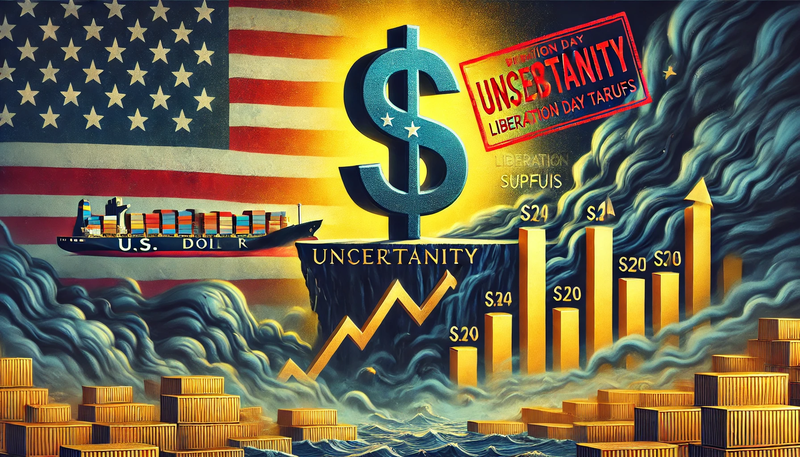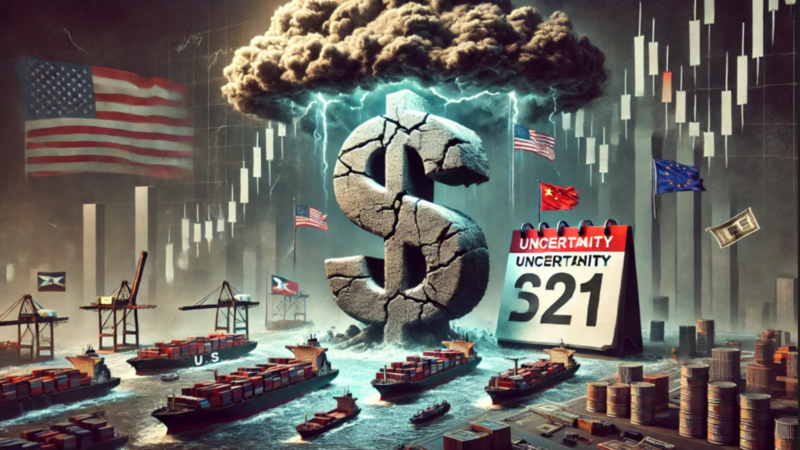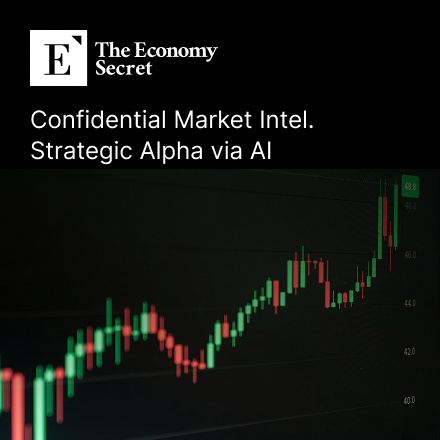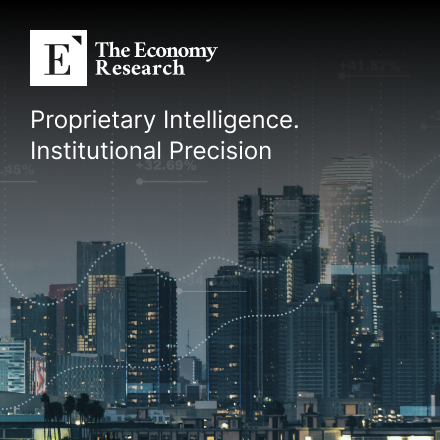Input
Changed
This article is based on ideas originally published by VoxEU – Centre for Economic Policy Research (CEPR) and has been independently rewritten and extended by The Economy editorial team. While inspired by the original analysis, the content presented here reflects a broader interpretation and additional commentary. The views expressed do not necessarily represent those of VoxEU or CEPR.

The foreign exchange screens went wrong when the White House dropped its all‑encompassing “Liberation Day” tariff package on 2 April 2025. Instead of the broad dollar index popping higher on the prospect of a narrower trade deficit, it tumbled almost a whole percentage point in the first half‑hour of trading—a two‑standard‑deviation shock in the five‑year intraday sample analyzed by Hartley and Rebucci for CEPR. That instant sell‑off encapsulates a more profound truth: risk premia overpower accounting flows in modern markets. When policy injects uncertainty, investors demand compensation, and that compensation shows up first in the price of the currency that issues the policy.
The textbook that failed in practice
Washington’s internal logic was algebra on a napkin:
Tariff ↑ ⇒ imports ↓ ⇒ trade balance ↑ ⇒ dollar ↑.
However, the algebra ignores the stochastic discount factor. A tariff is not just a wedge in relative prices; it is new information about future policy paths and how predictable or unpredictable they will be. The Liberation Day proclamation was delivered without congressional consultation, leaked impact studies, or prior bilateral feelers. Changing the variance around nearly every macro forecast—growth, inflation, Fed policy, corporate earnings—forced investors to add a risk premium to every dollar‑denominated asset they owned. That premium immediately outweighed the theoretical boost from a smaller current account deficit.
High‑frequency data captured the repricing in real-time. In addition to the 0.9 % fall in the dollar index, S&P 500 futures slid nearly two percent, the VIX shot three and a half vol points higher, and the ten‑year Treasury yield dropped eleven basis points as traders hedged with duration rather than dollars.
Three channels that dragged the dollar lower
1 | Policy‑uncertainty premium – Option‑implied vols in USD‑JPY and USD‑CNH jumped roughly 150 basis points within minutes of the announcement, dwarfing the move in spot FX. A higher expected variance mechanically lowers the discounted present value of holding dollars.
2 | Interest‑rate expectations flip sign – A stronger trade balance could, under ordinary conditions, give the Fed room to tighten. Liberation Day accomplished the opposite. Eurodollar contracts moved to lower forward rates as traders bet the growth hit would outpace any tariff‑related inflation, erasing what little carry advantage the dollar enjoyed early in the year.
3 | Safe‑asset substitution – When the issuer of the world’s reserve currency delivers a policy shock without a roadmap, even Treasuries lose part of their “exorbitant privilege.” The ING economics desk summed up the mood in a flash note: “Risk-off is the only game in town,” and the market would “not be easily convinced that protectionism is here to stay.” Capital fled into Bunds, OATs, and—tellingly—the Swiss franc, a haven whose legal framework looked suddenly more reassuring than Washington’s.

How the shock ricocheted across Asia
The time‑zone hand‑off amplified the move. When Tokyo opened, precise tariff lines were still unknown, and rumors of Chinese retaliation multiplied on X. The Korean won dropped almost three percent against the dollar in a single session; Taiwan’s dollar and Indonesia’s rupiah were not far behind, while high‑beta equity indices from Jakarta to Seoul recorded their worst percentage falls since the pandemic. In financial jargon, peripheral currencies do the most price discovery when the core stumbles.
Conversely, the low‑beta trio of AUD, NZD, and CHF were relative pillars of calm. Their one‑day moves stayed within half a percent, proving that volatility migrates to the point of least policy clarity. Looking back ten days later, Australian commentators were still “wondering what just happened to global markets” as the local bourse chalked up its worst and best days since 2020 within the same tumultuous week.
Trump’s quick retreat: politics meets funding costs
The market reaction blindsided the administration. Within 72 hours, the President had pivoted to the language of “flexibility,” signaling that negotiation carve‑outs were on the table. Why the sudden volte‑face? Because the dollar slide threatened to feed directly into higher petrol prices and mortgage rates—key pain points for suburban voters heading into mid‑terms. Reuters tick‑tock coverage of the episode estimated that over five trillion dollars in global equity value evaporated in the first week of April, with U.S. pension funds and money‑market vehicles among the biggest hits.
Wall Street research amplified the political cost. A widely circulated Deutsche Bank note argued the tariffs could add nearly four hundred billion dollars in effective tax burden, lifting core inflation and forcing the Fed to choose between growth and credibility. The Financial Times caught the flavor: traders were no longer debating earnings multiples but “the discount one must apply when the policy is written on Twitter”.
What the episode teaches about currency economics
- Surprise > size. A 10 % tariff flagged months in advance would probably have lifted the dollar. A 46 % tariff sprung unannounced, but it did the opposite.
- Reserve status is a network effect, not a law of physics. An Associated Press piece tallied a nine‑per‑cent drop in the dollar index since January, a move that would have been unthinkable two decades ago without a Fed easing cycle.
- Flow effects are second‑order to discount‑rate the impact. Even a two‑hundred‑billion‑dollar swing in the trade balance is trivial next to a fifty‑basis‑point jump in the term premium that investors demand when policy clarity vanishes.
- Peripheral markets broadcast the real signal. The eruption in won and Taiwan‑dollar volatility was not a footnote; the canary convinced deep‑pocketed U.S. fixed‑income desks to lighten dollar duration.

A forward‑looking note to policymakers
The Liberation Day episode is already shaping the playbook of future administrations. One lesson is that you cannot retrofit certainty. Credibility must precede action. Transparent rules, public impact studies, and early‑stage dialogue with trading partners are not niceties; they are the minimum premium for safeguarding reserve‑currency status.
Second, monetary autonomy depends on political restraint. By jolting asset markets enough to lower forward-rate curves, the tariffs boxed the Federal Reserve into a potential credibility conflict: chase tariff‑provoked inflation or rescue growth. Investors priced that dilemma instantly, and the dollar paid the bill.
Finally, the United States should remember that its key geopolitical rivals are eager to exploit any wobble in dollar dominance. The yuan’s share of cross‑border settlements has climbed from two to almost five percent since 2023, and every percentage‑point gain comes easier when Washington looks unreliable.
Trust is the reserve asset the U.S. cannot print
Tariffs may alter who sells televisions to whom, but trust determines who buys Treasuries when the world is on fire. On Liberation Day, markets delivered a blunt verdict: capital will be made elsewhere if uncertainty is made in America. To rebuild the premium embedded in the dollar, U.S. policymakers must trade brute economic leverage for procedural predictability. Until they do, every new tariff will be a fresh invitation for investors to diversify away from the greenback—and no projected trade surplus will be large enough to offset the flight from uncertainty.
The original article was authored by Alessandro Rebucci and . The English version of the article, titled "Tariffs, the dollar, and equities: High-frequency evidence from the Liberation Day announcement,” was published by CEPR on VoxEU.





















